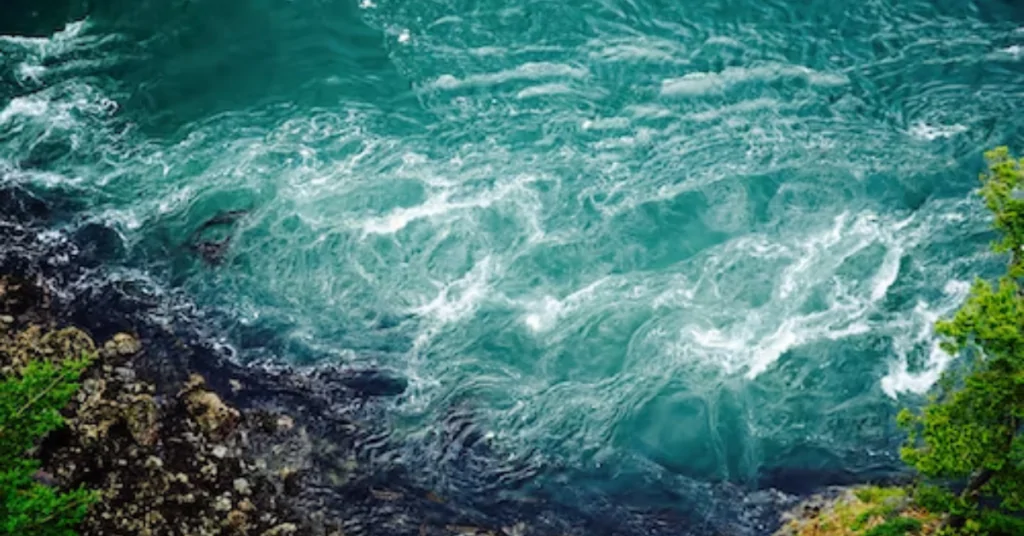For Boats, Aircraft, And RV Water Storage And Over-Wintering

Chlorine dioxide is a powerful disinfectant that is effective against many in water treatment plants to purify drinking water, and it can also be used to clean swimming pools and hot tubs. In addition, chlorine dioxide can be used to sanitize boats, aircraft, and RVs. When used in travel and recreation, chlorine dioxide can provide several benefits. It is especially beneficial in over-wintering situations because it prevents the growth of bacteria and other microorganisms that can cause illness. Chlorine dioxide also protects against biofilm build-up, which can lead to the contamination of stored water. When used as directed, chlorine dioxide will not cause harm to humans or animals. It is often used in municipal water systems to disinfect drinking water. Here we’ll explore some benefits and how CLO2 can be used in travel and recreation for boats and aircraft. Stay safe having fun on your next trip!
Benefits of Chlorine Dioxide In Travel And Recreation For Boat and Aircraft
- Chlorine dioxide is a powerful sanitizer that can help to prevent the spread of illness and disease.
- It’s also effective at removing organic contaminants from water, making it safe for drinking and swimming
- Safe to use. Unlike other disinfectants, it does not produce harmful byproducts or leave toxic residue
- Versatile for use in any plastic, rubber, stainless steel, or glass water storage tank
- It can be used to disinfect water and food surfaces, eliminating the risk of food poisoning or cross-contamination
- Very easy to use. It can be added to water and does not require special equipment or training to operate effectively
- Affordable and available in small bottles that are easy to store and transport. It can be used to purify drinking water, and in water systems.
- Can be used in conjunction with other sanitation methods such as washing, filtering, ultraviolet light or ozone treatment
- Prevents the growth of bacteria and other microorganisms and protects against biofilm build-up
- Often used in municipal water systems to disinfect drinking water. Chlorine dioxide is effective in treating both fresh and saltwater.
- Chlorine dioxide can be used to disinfect surfaces, such as countertops, sinks, and toilets. Chlorine dioxide is safe for use around children and pets.
effective way to sanitize your water storage, consider using chlorine dioxide.
If you are looking for an effective way to sanitize your water storage, consider using chlorine dioxide. It is a safe and effective sanitizer that will help keep your water clean and potable. Water is the most important substance on Earth. Not only does it make up the majority of our bodies, but it is also essential for plant and animal life. Without water, there would be no life on Earth. Water is a limited resource, and it is becoming increasingly difficult to access fresh, clean water. This is especially true for boat owners, aircraft owners, and RVers, who often have to store water for long periods. There are a few things you can do to make sure your water is safe to drink and lasts as long as possible.

fresh water treated with an EPA-approved disinfectant
First, always use fresh water treated with an EPA-approved disinfectant. Boiling water for one minute is also an effective way to kill harmful bacteria. Second, store your water in a cool, dark place. Heat and light can cause chemicals to leach into your water, making it unsafe to drink. Finally, don’t forget to change your water filter regularly. A dirty water filter can allow bacteria and sediment to build up in your water, making it unsafe to drink.
- Chlorine dioxide is the only EPA registered disinfectant that is effective in killing bacteria, viruses and cysts (such as Cryptosporidium and Giardia) in both fresh and saltwater, to purify drinking water systems, as well as to treat water for bathing, cooking, and other uses.
- Chlorine dioxide is a powerful oxidizer that kills microorganisms by attacking their cell walls and disrupting their metabolism. It is effective against a wide range of bacteria, including E. coli and Salmonella, as well as viruses and cysts.
Chlorine dioxide is safe for humans and animals, and does not produce harmful by-products when used as directed. It is also non-corrosive, so it will not damage your boat, aircraft, or RV. Chlorine dioxide is also effective in treating swimming pool and hot tub water.

Used as a shock treatment to control sludge, slime, biofilms, or bacterial and fungal growth in freshwater holding tanks, gray water tanks, transfer lines, or water irrigation systems, This service is recommended twice per year. Maintain concentrated levels in the system for 12 hours followed by a thorough rinse. Use continuously at lower concentrations to ensure clean water year-round.
WATER STORAGE AND SYSTEMS. R.V., BOAT, HOLDING TANKS, SPA, POOL, WASTEWATER.
Use for non-potable treatment on beverage and fountain drink equipment (breweries, wineries, and dairies), related storage (holding tank), transfer and dispensing lines of this equipment, filtration/humidification systems, process water for final rinse of containers, including bottles, plastic, glass, or metal cans and kegs ensuring visible wetness. For decorative, ornamental, or operative systems such as swimming pool, spa, hot tub, (with pH 7.2-7.6) once-through and recirculating cooling towers, R.V., fleetes, marine, or aircraft storage for potable and non-potable water. Prepare solution to a strength consistent with the threshold for general cleaning and antimicrobial uses, to prevent, inhibit or remove organic buildups, disinfect wastewater, or eliminate odor in fouled water.
| Use-Site | CONCENTRATION | Mix EQUAL PARTS 1:1 – NaClO2 (Part A) and HCl (Part B) |
| Wastewater (Batch or Meter) | Continuous – 5 PPM Shock – 50 PPM Heavily Contaminated – 100 PPM | 5 drops A, with 5 drops B 1 gallon of water 50 drops A, with 50 drops B in 1 gallon of water. (2ml = 50 drops) 100 drops A, with 100 drops B in 1 gallon of water. (4ml = 100 drops) |
| Non-Potable Equipment, Holding Tanks and Lines | 100 PPM | 100 drops A, with 100 drops B in 1 gallon of water. (4ml = 100 drops) |
| Potable Water | 0.8 PPM | 1 drop A, with 1 drop B in 1.2 gallons of water |
Use as a solution for batch treatments, shock treatments, or continuous operation injected with a metering system
Mix in the bottom corner of a designated plastic mixing container. Let the solution activate for 1 minute before dilution, then fill the container with the appropriate quantity of clean water. Agitate until mixed. Use as a solution for batch treatments, shock treatments, remedially, intermittent, periodic, or continuous operation injected with a metering system to maintain desired results for system concentration and decontaminated storage. To apply: Circulate water in normal operation until desired results are achieved in the system. For pool or spa, apply when no people are in the water. Fill, flush, immerse, circulate or spray tank, line, equipment, or food contact surface with an active solution for 10 minutes ensuring all surface area is thoroughly wet. After sanitizing, drain the tank, line, or equipment, followed by thorough rinsing with potable water, for at least one (1) minute. Allow airing dry or drain-drip.
REFERENCES.
A Guide to Drinking Water Treatment and Sanitation for Backcountry & Travel Use. Center for Disease Control and Prevention. Oct. 2022.
Decontamination of Strawberries Using Batch and Continuous Chlorine Dioxide Gas Treatments, Vol 67, NO 12.. Journal of Food Protection. Y Han. Jan. 2009.
Oxidative Elimination of Cyanotoxins: Comparison of Ozone, Chlorine, Chlorine Dioxide And Permanganate, 15):3381-93. Epub. Rodríguez E,. June 2007.
Preventing Spread of Disease on Commercial Aircraft: Guidance for Cabin Crew. Center for Disease Control and Prevention. August 2019.
Greenhouse and Nursery Water Treatment Information System. Controlled Environment Systems. University of Guelph, Canada. Youbin Zheng, Diane Cayanan. 2013.
Reregistration Eligibility Decision (RED) for Chlorine Dioxide and Sodium Chlorite (Case 4023). Prevention, Pesticides and Toxic Substances. Aug. 2006.
Chlorine dioxide (ClO2) is Most Commonly Used as a Disinfectant in Cases Where Problems of Taste and Odour Arise with Chlorine. Walker, John M. Donohue. 2009.
Seasonal Occurrence Of The Pathogenic Prevention Methods Of The Disease, Vol.66; No.5; P. 799-804. Japanese Society of Fisheries Science. K. Tajima, 2000.
Data for Comparison of Chlorine Dioxide and Chlorine Disinfection Power in a Real Dairy Wastewater Effluent. Chlorine Dioxide: World Wide Science. Maliheh Akhlaghi. Jan. 2018.



